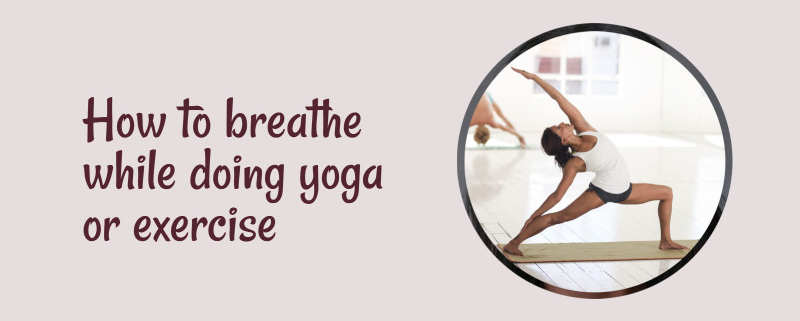How to breathe while doing yoga or exercise
Introduction to yoga
The ultimate goal of Yoga is self-realization which is achieved through integration of body, breath, mind and consciousness. Yoga typically combines physical postures (asanas), breathing techniques (pranayama), and meditation (dhyana).
Yogasanas and efficacy
One of the well-known parts of Yoga is Asana or frequently referred as Yogasana. Through Yogasana one increases their body flexibility, increase their muscle strength, reduces stress and stiffness. This in turn provides the inner strength to cope with any kind of situation with calm.
Dilemma about how to breathe
While one may attain good flexibility by doing yogasanas, breathe plays an important role while practicing yogasanas. Knowing the right way of breathing helps in increasing the effectiveness of the practice, contrarily breathing improper way may lead to unwanted results such as discomfort or put pressure on internal organs.
How to breathe
Simple rule: Breath-out (exhale) when the stomach is contracting, Breath-in (inhale) when the stomach is expanding.
If one is new to yoga or learning a new asana, practice yogasana with normal breathing in the beginning. Once become comfortable with the asana, then practice holding the breath under a qualified yoga guru.
Exhale while forward bending, side bending or twisting
While practicing forward bending asanas like Padahastasana, Janusirasana, Pavanamuktasana, and side bending asanas like Trikonasana, Parigasana, side twisting asanas like Vakrasana, Parivrita-Trikonasana, Bhunamasana, Markatasana breath-out slowly and steadily.
Inhale while backward bending
While practicing back bending asanas like Ardha-Chakrasana, Ushtrasana, Dhanurasana, Setubhandasana breath-in slowly and steadily.
Hold: when can we hold the breath
Hold after exhaling (bahya-kumbhaka): In the final posture of forward bending, side bending or side-twisting asanas, hold the breath as long as it can be held comfortably.
Hold after inhaling (antar-kumbhaka): In the final posture of backward bending hold the breath as long as it can be held comfortably.
Another simple rule is to hold the breath (after inhalation or exhalation) only to half of the capacity, as an example if one can hold the breath for 10 seconds after inhalation, hold only for 5 seconds and start exhalation. The reason: if one holds the breath for too long, then they would exhale in a short burst rather than a slow and steady exhalation.
Breath can be held (either in bahya-kumbhaka or in antar-kumbhaka) while doing straight-spine asanas like Tadasana, Viparitakarani, Moordhasana, Vajrasana, Siddhasana and all meditation postures.
Normal breath while doing following asanas
Asanas that are practiced for a longer duration like Sirshasana, Vrikshasana, Vajrasana, Dandasana, Sarvangasana, Savasana and all relaxation and meditation postures can be practiced with normal breath.
Conclusion
Practice yogasana with normal breathing in the beginning. Once become comfortable with asana practice, exhale when the stomach is contracting, inhale when the stomach is expanding. Always practice under an experienced yoga teacher when practicing asana with holding the breath.
No matter how the asanas are practiced (with or without holding the breath) always practice the asanas with breath-awareness to produce the best results.
Authors: Dr Srikrishna Chandaka, Dr Raghava B Tadavarthi.
Collaborate with us
We would be happy to listen to your suggestions and make necessary updates to the content presented here. If you desire, we will be more than happy to give you the credit for your content contribution.

